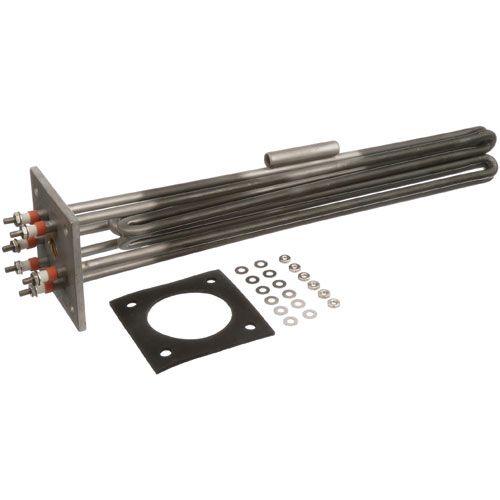How to Overcome Most Common Restaurant Issues & Solutions: Expert Insights
Running a successful restaurant requires dedication, precision, and a willingness to tackle a multitude of challenges. From managing customer expectations to ensuring seamless operations, restaurant owners and managers encounter various issues daily. Fortunately, these challenges can be effectively navigated with strategic insights and proactive approaches. In this blog, we will explore some of the most common issues faced by restaurant owners and operators, and, with the help of expert insights, present practical solutions to overcome these hurdles.
Difficulty in Finding Adequate Staff:
One of the most pressing issues faced by restaurants is the challenge of recruiting and retaining qualified staff. In a competitive industry where the demand for skilled workers often exceeds the supply, finding reliable and capable employees can be a daunting task. Shortages in staffing can lead to increased workloads for existing team members, decreased service quality, and ultimately impact the overall success of the establishment.
Solution
Offer competitive wages, benefits, and bonuses to attract talent. Invest in training for career growth and to boost morale. Use employee referrals for culturally fitting candidates. Expand recruitment via online platforms and clear job postings. Partner with culinary schools for internships. Foster a positive work environment with open communication and recognition.
Increase in the Cost of Food:
One of the most common challenges faced by restaurant owners is the steady rise in the cost of food supplies. Fluctuations in food prices can significantly impact profit margins and operational expenses, putting a strain on the financial health of the establishment.
Solution
To enhance profitability, conduct menu engineering to identify and revise high-cost items. Negotiate with suppliers for better prices or consider alternative vendors. Adapt menus seasonally to use cost-effective, readily available ingredients. Implement portion control to reduce waste and maintain consistent serving sizes. Adjust menu pricing to reflect increased costs and use dynamic pricing techniques like value bundling to stay profitable.
Changing Tastes and Preferences of Customers:
The dynamic nature of consumer tastes and preferences poses a significant challenge for restaurants striving to meet the ever-evolving demands of their clientele. Adapting to shifting trends and ensuring customer satisfaction in a competitive market requires continuous innovation and attentiveness to changing preferences.
Solution
Stay informed about food trends and consumer preferences through market research and feedback. Diversify your menu with innovative dishes, catering to diverse tastes and dietary preferences, like fusion cuisines and plant-based options. Use seasonal ingredients for limited-time specials to add variety and appeal. Offer customization options to accommodate dietary restrictions and preferences, allowing customers to personalize their dining experience. Encourage interactive feedback through comment cards, surveys, and social media, and use this input to tailor your offerings and enhance satisfaction.
Managing Online Reputation:
In today's digital age, managing online reputation is crucial for restaurants as customers heavily rely on online reviews and ratings when making dining decisions. Negative feedback or a lack of visibility can significantly impact a restaurant's image and customer perceptions.
Solution
|
Aspect |
Details |
|
Monitoring |
Regularly check review platforms (Yelp, Google, TripAdvisor) and social media for feedback. |
|
Engagement |
Respond to comments and reviews; show appreciation for positive feedback. |
|
Brand consistency |
Maintain a consistent brand voice across all online platforms to reflect the restaurant’s image. |
|
Encouraging reviews |
Offer incentives (discounts, free desserts) to encourage positive reviews. |
|
Using feedback constructively |
Use feedback to identify areas for improvement and demonstrate a commitment to enhancement. |
Incorporating technology:
With the rapid advancement of technology, restaurants are increasingly turning to innovative solutions to streamline operations, enhance customer experiences, and stay competitive in the digital era. However, integrating technology effectively poses challenges such as implementation costs, staff training, and ensuring a seamless customer journey.
Solution
Implement online ordering systems and mobile apps for convenient delivery or pickup, integrate seamless payment options, and offer incentives to boost sales. Introduce tableside technology for efficient menu browsing, ordering, and payments, enhancing the dining experience and reducing wait times. Use inventory management software to track stock, streamline ordering, and reduce waste. Deploy CRM systems to collect customer data for personalized marketing and targeted promotions, improving engagement and loyalty.
Ensuring Compliance with Health and Safety Regulations:
Adhering to health and safety regulations is paramount for restaurants to maintain a safe environment for customers and staff, prevent foodborne illnesses, and uphold the reputation of the establishment. However, ensuring compliance with stringent regulations can be challenging due to the evolving nature of health guidelines and the need for ongoing vigilance.
Solution
Conduct regular staff training on health and safety protocols, including food handling, sanitation, and emergency procedures. Implement strict sanitation practices in all areas, including the kitchen, dining room, and restrooms, and regularly clean equipment and surfaces. Perform regular health and safety inspections, addressing any issues promptly. Use temperature monitoring systems and sensors to ensure safe food storage and cooking.
Effective financial management:
Maintaining sound financial management practices is essential for the long-term success and sustainability of restaurants. Challenges such as fluctuating food costs, seasonal demand variations, and operational expenses require diligent financial planning and monitoring to ensure profitability and growth.
Solution
|
Financial Management Practice |
Details |
|
Develop a detailed budget |
- Outline projected revenues, expenses, and cash flow. - Adjust regularly based on performance and market conditions. |
|
Implement cost control measures |
- Monitor food, labor, and overhead costs. - Negotiate better supplier pricing. |
|
Conduct menu engineering |
- Identify and adjust high-profit items. - Optimize pricing and portion sizes. |
|
Evaluate investment opportunities |
- Perform cost-benefit analysis. - Prioritize investments aligned with strategic goals. |
|
Generate financial reports regularly |
- Track performance. - Analyze data. - Seek insights from financial professionals. |
Competing with Delivery Applications:
With the increasing popularity of delivery applications, restaurants face the challenge of effectively competing in the digital delivery space while maintaining their branding and customer experience. Here are some strategies for restaurants to compete effectively with delivery applications:
Solution
Create a seamless delivery experience by offering in-house delivery or partnering with third-party providers, investing in quality packaging, and providing accurate delivery time estimates. Optimize the menu for delivery by ensuring items travel well and offering delivery-only specials. Emphasize exceptional customer service with timely updates, responsive support, and a user-friendly ordering interface. Implement loyalty programs and incentives to encourage repeat orders. Maintain strict quality control to ensure consistency in food quality and presentation. Use online marketing strategies to promote delivery services and differentiate your brand. Utilize customer data for personalized marketing and tailored promotions.
Practising Sustainability and Environmentally-Friendly Methods:
Restaurants are increasingly recognizing the importance of adopting sustainable and environmentally friendly practices. From reducing food waste to implementing energy-efficient solutions, here are some ways to practice sustainability:
Solution
Source locally by partnering with nearby farmers and suppliers for fresh, seasonal produce, supporting the local economy, and reducing transportation emissions. Minimize food waste through accurate demand forecasting, repurposing surplus ingredients, and donating excess food. Invest in electrical and energy-efficient appliances, LED lighting, and smart HVAC systems to cut energy use and costs, and install water-saving fixtures. Use recyclable or biodegradable packaging for takeout and delivery, and encourage customers to use their own reusable containers.
Training and Developing Staff:
Investing in the training and development of restaurant staff is essential for delivering exceptional service and maintaining operational excellence. Here are strategies to address this issue:
Solution
Develop structured training programs for new hires and ongoing training modules for existing staff, covering areas such as customer service, menu knowledge, and sanitation protocols. Cross-train staff to handle various roles, promoting flexibility and engagement. Offer leadership development programs for high-potential employees to nurture future managers. Foster a culture of continuous feedback and coaching for professional growth.
Striking a Balance Between Quality and Speed of Service:
Balancing service speed with maintaining high-quality standards is crucial for overall customer satisfaction. Here are some strategies to address this challenge:
Solution:
Simplify the menu to streamline kitchen operations and speed up order preparation without sacrificing quality. Replace worn or damaged parts in your commercial cooking appliances. Optimize the kitchen layout to reduce unnecessary movement and improve workflow. Standardize preparation processes to ensure consistency and quicker execution. Integrate kitchen display systems and order management software to enhance communication and reduce errors.
Establishing and Nurturing Customer Loyalty:
Building and nurturing customer loyalty is essential for sustained success. Here are strategies to establish and strengthen customer loyalty
Solution
Implement a structured loyalty program that rewards repeat customers with discounts, free items, or exclusive offers. Use customer data to personalize the dining experience with tailored recommendations and special occasion acknowledgments. Maintain consistent food quality, service standards, and overall experience to build trust and loyalty. Actively seek and respond to feedback to show commitment to improvement.
Addressing common restaurant issues requires a proactive approach and a commitment to excellence. By understanding the root causes of these challenges and implementing the right strategies, restaurant owners and managers can maintain operational efficiency, uphold food quality, and enhance the overall dining experience for their patrons. From streamlining kitchen operations to optimizing customer service and embracing technological solutions, the path to overcoming these challenges involves a combination of effective management, staff training, and attention to detail. PartsFe.ca provides an extensive selection of parts and accessories for commercial appliances, including ovens, grills, griddles, dishwashers, and ice machines. Discover high-quality commercial appliance parts from leading manufacturers at competitive prices.
FAQs
What should I do if my restaurant is experiencing food quality issues?
Address sourcing and storage concerns, maintain kitchen hygiene, standardize recipes, and conduct regular food quality audits.
How can I manage restaurant inventory more efficiently?
Implement inventory management systems, conduct regular stock checks, minimize waste, and optimize ordering processes based on demand forecasts.
What are some strategies for reducing restaurant operating costs?
Monitor and control utility usage, negotiate with suppliers for better pricing, streamline processes to increase efficiency, and cross-train staff to handle multiple roles.
















